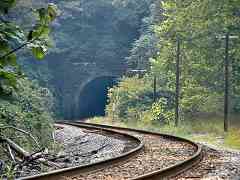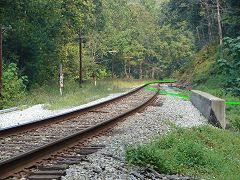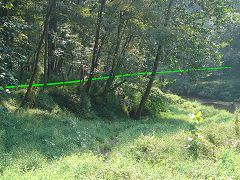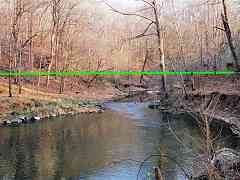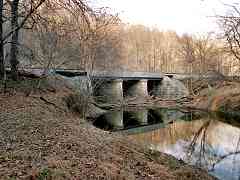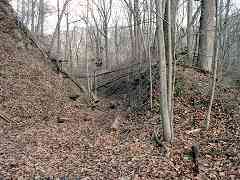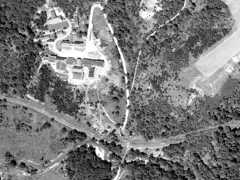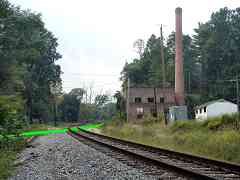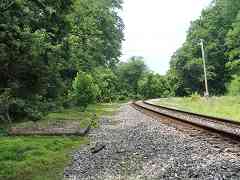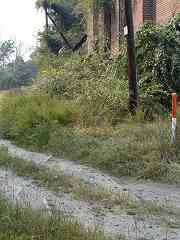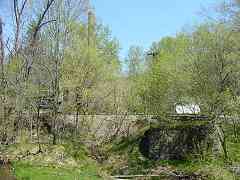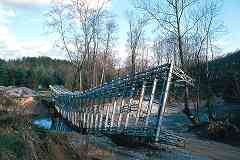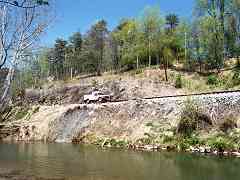|
All Henryton Hospital buildings were demolished during 2013, but B&O's
station foundation survives at left.
The beginning of the end for the hospital came during the mid 2000s when
police seemed to tire of guarding it. We visited around 2001 while the
main gate at Henryton Road was open, and found a lady sitting in a beach
chair in the middle of a large parking lot. Rather than explain why the
area was under guard, she acted annoyed that we were there and abruptly
chased us out, admonishing us for not obeying the no trespassing sign.
As we learned upon departure, that sign was not visible because it was
facing inward on the gate that had been swung 180 degrees open.
Other Patapsco Park visitors likely experienced similar odd treatment, making
them wonder what was going on at the old facility, thus increasing curiousity.
Eventually, police could not keep up with the number of curious visitors, some
of whom began to vandalize the buildings, hastening their end. Such destruction
exhibits human psychology that some say reveals a feeling of inferiority or
a lack of confidence. A friend likes to build small snowmen to see who
kicks them down, and says from that he learns a lot about people.
Link:
2017
|
